Best Laid Plans
Barry Thompson went to the southernmost parts of New Zealand to experience boating with a couple of McLay 775 Hardtops and got a lot more than he had bargained for.
I can now appreciate even more why South Islanders, especially those in the Deep South, have a love of hardtops. While Auckland basked in temperatures in the mid 20s, with cloudless skies and little wind, at the same time 1200km away in Invercargill, I was cold and wet, with crap weather trying to ruin my day. However, while it ruined my attempt to spend a few days at Stewart Island, it didn’t spoil the trip – it just completely altered it!
I had flown to Invercargill to test a couple of McLay 775 Hardtops with the original plan to take both boats, one powered by a Mercury Verado 300, the other with a Cummins MerCruiser 270hp diesel, across Foveaux Strait to Stewart Island, for a couple of days of diving and fishing.
This was in fact the third time I had been South with the intention of taking a trailer boat across the notoriously savage 22NM stretch of water between Bluff and Half Moon Bay on Stewart Island. Well, as they say …“The best laid plans ….”. From the moment we arrived in Invercargill things looked doubtful and our host, Paul Ruddenkklau of Marine South, local agent for McLay Boats, was expressing some concern about our getting to the Island.
Plan B was to head up to Lake Te Anau and run both boats there, but I had visions of a calm fresh water lake doing little to show the true performance of these offshore hardtops. Boy, was I to be proven wrong!
40 Knots and Climbing
An early start on the Thursday morning saw us launch at Bluff and head out into Foveaux Strait with the intention of having a quick run in the rough water before returning to the ramp and driving for 2 ½ hours to the ‘calm lake’. After 15 minutes of cruising along in the 1m swells being whipped with a 25-knot NW wind, things seemed okay so we made the decision to keep going and spent a full day around Paterson Inlet before returning later that evening to Bluff. Te Anau could wait for another day.
I rode across in the Cummins diesel powered 775 and in the quartering sea from our stern, the boat handled the rough conditions exceptionally well. The big blade area of the prop and the extra weight of the diesel low in the stern of the boat certainly helped. The engine speed remained reasonably constant around 2250 rpm as we ate up the miles.
Alongside, the Mercury outboard powered 775 was also having a stress-free run, despite the large seas and deep swells. In just short of an hour we were into the calm waters off Half Moon Bay and deciding what our next move was. We headed around to Paterson Inlet for a photo shoot and a dive, but after a quick check with Fouveax Strait radio we changed our mind. A front was fast approaching and would reach us at full strength in the late afternoon. Fifty-knot plus winds and a gale warning for at least a couple of days was enough to turn us right around and head back from whence we had come.

So although I did actually make Stewart Island, like Cook 240 years before, I never set foot on it. The weather had already turned for the worse by the time we headed out of Paterson Inlet and for the early part we struggled to keep either boat on the plane. It was shaping up to be a hell trip home.
However, as we got further out into the Strait we managed to maintain around 10 knots on the plane in a very difficult sea that seemed to be getting worse every mile we got further away from Stewart Island. I had chosen to go back in the outboard 775 which, given the extreme seas, handled just fine. Again the call was to take it easy and drive a steady pace back to Bluff. It was about now that I really appreciated the hardtop for its protection. Inside, the team remained warm and dry. However I was ‘a little under the weather from a late night prior’ and found the fresh air of the cockpit a better option.
It took us about 2 hours to get back to Bluff where we refuelled both boats to see what they had consumed. The Cummins Mercruiser used 70 litres for a cost of $80 and the Mercury Verado 300, 100 litres for a cost of $174.
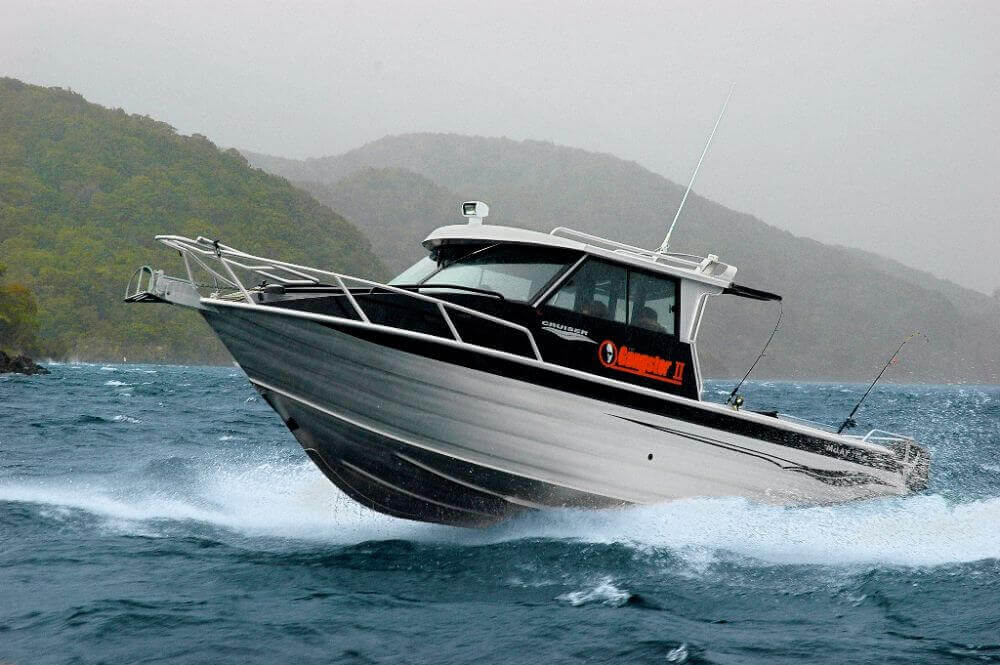
Calm Lake Boating….yeah right!
With the adventure to Stewart Island aborted we decided to instigate plan B and head to Lake Te Anau. Having never been there before I was interested to find out more about it.
Lake Te Anau is in the south western corner of the South Island of New Zealand. Its name was originally Te Ana-au, Maori for ‘The cave of swirling water’. Boy was that ever apt! The lake covers an area of 344 km², making it the second-largest lake by surface area in New Zealand (after Lake Taupo) and the largest in the South Island.
The main body of the lake runs north-south, and is 65km in length, which when the wind’s blowing in the right direction, the surface of the lake has plenty of time to build up. Three large fiords form arms to the lake on its western flank: North Fiord, Middle Fiord and South Fiord. Several small islands lie in the entrance to Middle Fiord, which forks part way along its length into northwest and southwest arms. The lake lies at an altitude of 210m, and since its maximum depth is 417m much of its bed lies below sea level. Fishing is very much brown or rainbow trout, either trolling from the boat or casting into one of the many rivers that feed into the lake.
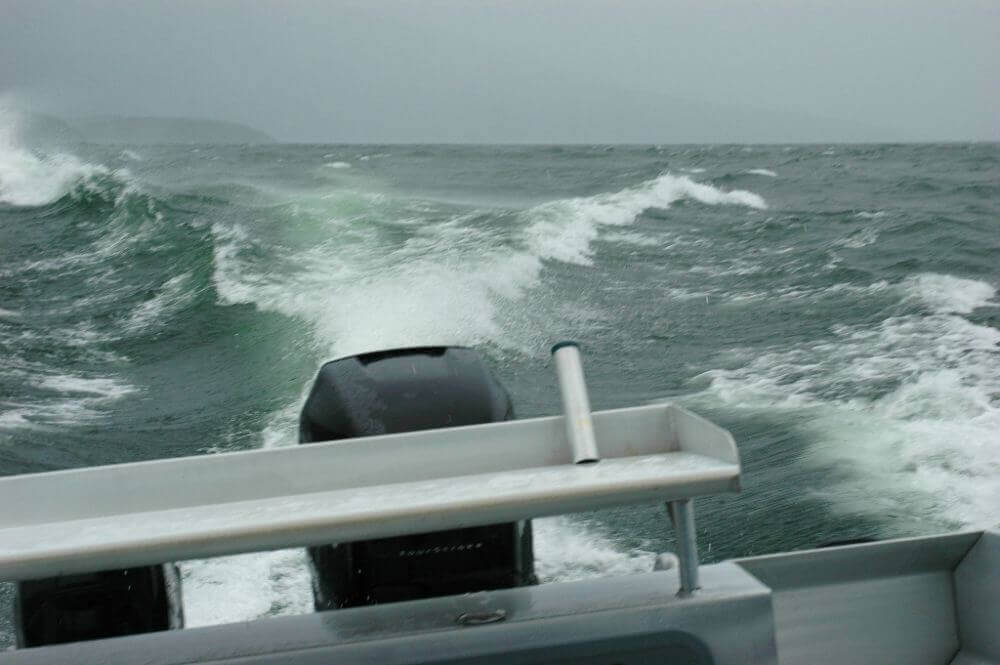
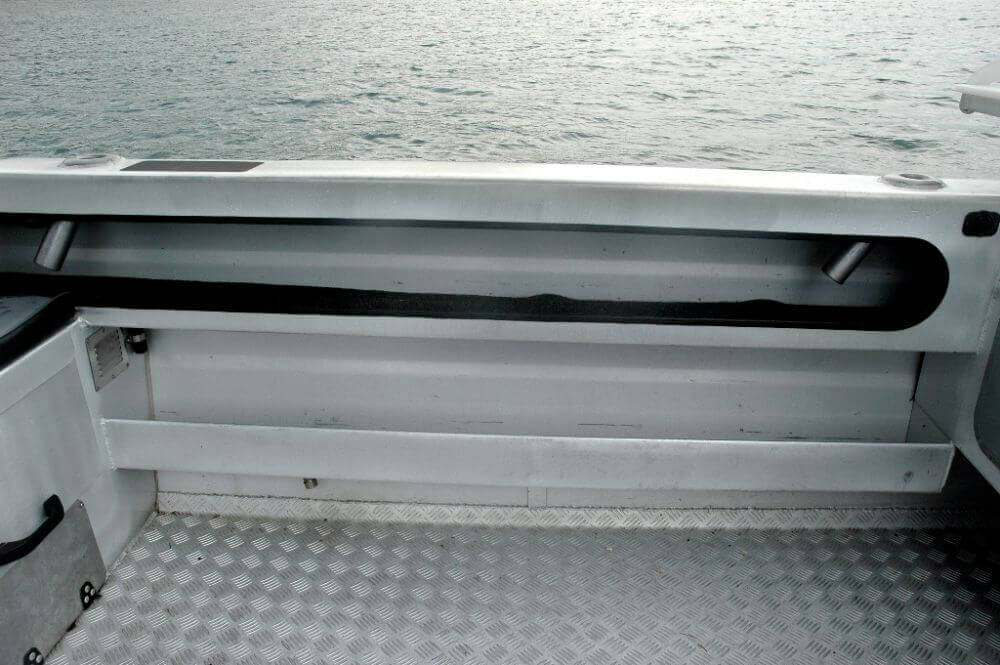
My first sighting of Lake Te Anau was very different from what I had imagined. The “calm, placid lake” was an ‘inland clone’ of what we had experienced in the morning in Foveaux Strait. Upwards of 2m swells, steep with massive drop-offs and gusting winds tearing the tops off in a white flurry. Waterspouts were everywhere and the temperature had dropped to below 12 deg and there was still plenty of snow on the hills. And that was only when we arrived.
The next morning we launched both boats into the sheltered boat harbour and very soon found ourselves punching head-on into the biggest swells I have ever experienced on a lake. So much for the calm lake scenario.
Both the McLay 775s worked their way without a problem through the swells and again the comfort level of the enclosed hardtop was appreciated. Despite their 8m length, the 775s were held back to a sedate pace in the interests of providing the best possible ride until we turned into the South Fiord. By now the rain had set in and while the water was reasonably calm, the wind was still ferocious.
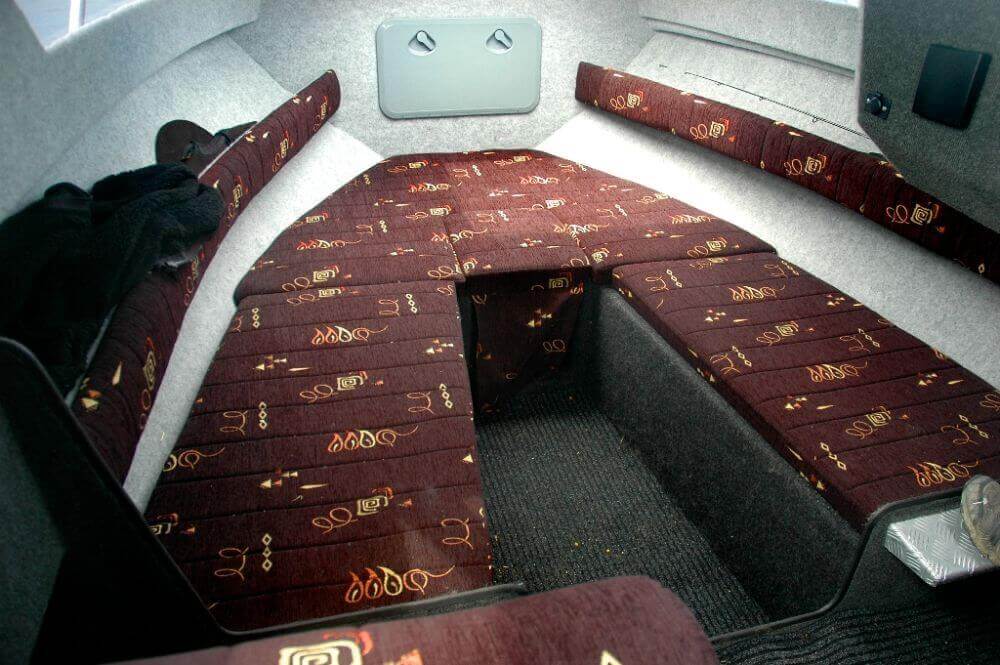
With a couple of lures trolling behind, we sat inside with the Webasto diesel heater keeping the cabin warm and with vents directed at the windscreen, any fogging was eliminated. The owners told me that in the winter and evenings they often spend hours on the lake, totally warm inside the cabin and only venture outside to drag in the occasional trout.
I had certainly experienced as extreme conditions as you would probably ever find when boating anywhere in the country. I had gone from the fury of Foveaux Strait to the equally furious Lake Te Anau. Overall, the McLay 775 did the business and was a pleasure to drive. It felt safe and secure in the extreme conditions and a comfortable hideaway in the calm. Mixed in between were some calm respites where I was able to clock up some performance readings.

The Mercury 300hp Verado pushed the McLay 775 to 44.5mph @ 6200 rpm, with the QSD 4.2/270hp topping out at 39 mph @ 4000 rpm. When it came to fuel usage the diesel package used 50L/h at maximum rpm and 28L/h at a comfortable cruise of 27.5mph @ 3000 rpm.
The Verado on the other hand recorded a heavy 118L/h at the top end, but a respectable 40L/h @ 3800 rpm, at a similar cruise speed to the diesel option.
The outboard powered version is about 300kg lighter than the diesel one, and was consequently a little more agile and lively, but the diesel boat was also nimble and quick to respond. The engine choice is personal and in both instances they worked exceptionally well. The upside of the outboard package is that you don’t lose cockpit space to an engine box, but the downside is the difference in fuel usage. The diesel option gives you cheaper running but the initial purchase price and installation cost is a whole lot more. Again, it’s a matter of personal choice.
Cosy & Practical
The wheelhouse layout in both boats was very similar. McLay offers a variety of options including three bulkhead positions that effectively increase the available space inside. From the standard position you can extend the rear bulkhead either 600mm or 900mm. The latter really transforms the cabin space for serious long term cruising, although it is at the expense of the workable area in the cockpit.
You have the extra space available for a rise and fall dining table with extra seating on the port side and a fully enclosed head/shower area to starboard with access from either the cabin or the cockpit. The table converts to another berth. Both boats I tested had the 600mm wheelhouse extension.
The double bi-fold alloy doors on our test boats were 50/50 alloy and glass, but in the new models they are now all glass which certainly lets in a lot more light and gives a more open feel to the wheelhouse even when closed. You can now also have drop-down windows in the side bulkheads.
To starboard in both boats was a two-burner cooker and sink under the squab, with a gas califont option supplying all the necessary hot water. A Webasto diesel heater situated in the cockpit pipes warm air through into the wheelhouse, keeping the cabin warm and dry.
While one boat had the portable toilet in the forward cabin under the centre squab, the other had it situated in the cockpit. In the 900mm cabin extension version you can have a separate enclosed head/shower area with a fully plumbed head with holding tank.
To port is another large storage area under the squabs and a massive area under the cabin sole. Our boats both had twin adjustable buckets seats with bench seating aft. With the addition of the removable door seat, (and the rear door shut) you can comfortably seat six or seven inside. It’s also big enough to use as another berth.
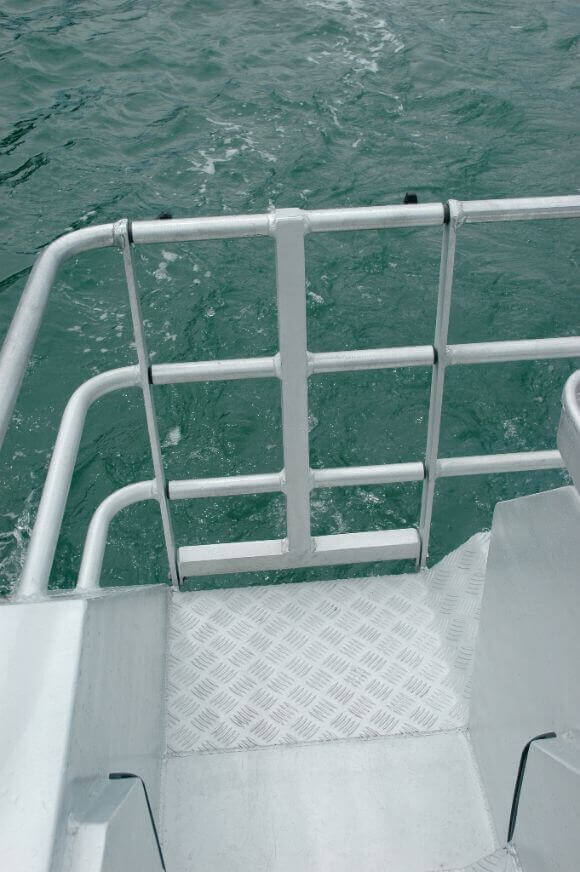

The cabin area forward is fully lined with soft fabrics to eliminate any raw alloy exposure. There are deep side pockets for storage, as well as space under the 2m long squabs. An infill turns this into a massive berth if required.
McLay builds-in an extra large deck hatch which is particularly useful when unloading bulky items such as hunting gear and chilly bins to the beach. A very ‘southern’ feature is the drop-down bow ladder that also makes for easy access to shore around the lakes and in the Sounds.
Cockpit Choices
The real difference in the two boats is the aft area of the cockpit. For’ard, both have seating boxes with padded cushions and side trays either side, but that’s where the similarities end. The outboard version has a walk-through transom to port, with storage lockers built in beneath an extra large bait station. The cockpit space for fishing is superb, with an alloy chequerplate sole, wide side coamings and plenty of rod holders.
While the sterndrive model has an intrusive engine box, it does have the added bonus of an additional bench seat and an even larger bait prep area. While our test boat only had one side of the transom cut out for access to the full-width boarding platform, new models will have both sides open. This has been done in conjunction with a further 200mm extension of the stern platform which will increase the available fishing work space to probably more than that of the outboard model. It is also now all at one height for ease of walking around.

What’s lost inside will now be more than compensated aft of the transom where it will be well utilised. A full alloy framed fence around the boarding platform, complete with built-in drop-down alloy ladder, provides the necessary security when fishing.
The hardtop overhang can be extended both into the cockpit and down the sides and comes with a pull-out canvas canopy for further protection.
Multi Purpose
The McLay 775, released in 2006, eventuated from the earlier 780, and features a slightly deeper vee forward and midships, although retaining an 18-degree deadrise at the transom. The result is a softer riding boat. Another major change is that the hull bottom is 6mm instead of the previous boat’s 5mm.
Currently, the company builds 8-10 a year and because of the options available you can have either a ‘caravan on water’ or a serious fishing/dive boat. Every boat can be different and the builders are more than happy to try and accommodate most custom requests, as long as they fit within given structural parameters.

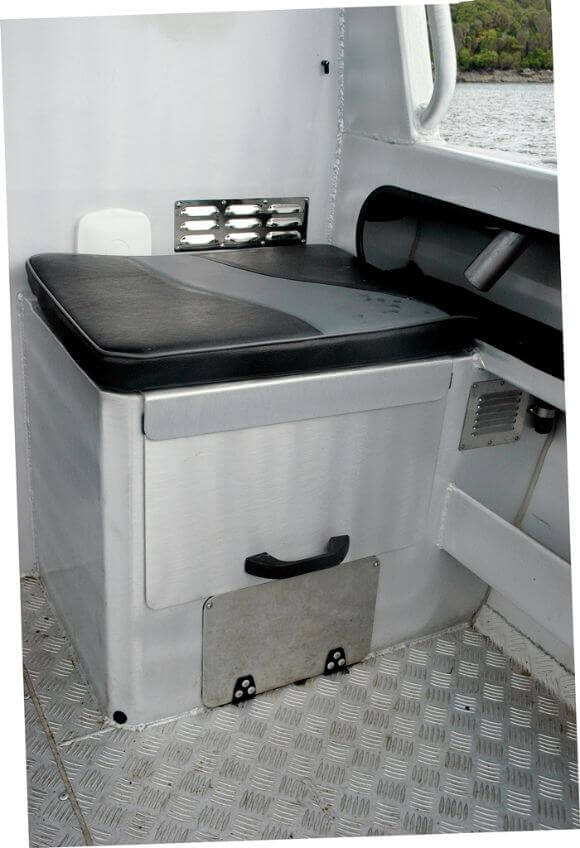
TECHNICAL SPECIFICATIONS
- Make: McLay
- Model: 775 Cruiser Hardtop
- Price As Tested: $ 178,200 (Outboard)
- Price As Tested: $195,000 (Sterndrive)
- Packages from: $111,500 (OptiMax 225)
- Designer: Steve McLay
- Material: Aluminium 6mm hull/ 4mm topsides.
- Type: Hardtop
- LOH: 7.85m
- LOA: 8.10m
- Beam: 2.48m
- Deadrise: 18 deg
- Hull Config: Semi Deep Vee
- Trailerable Wght: 3000kg (Sterndrive) / 2700kg (Outboard)
- Height on trailer: 3.0m (Top of rocket launcher)
- Engine Capacity: 200 – 350hp
- Power Options: Outboards/Sterndrive
- Fuel Capacity: 300 litres
- Water Capacity: 150 litres




